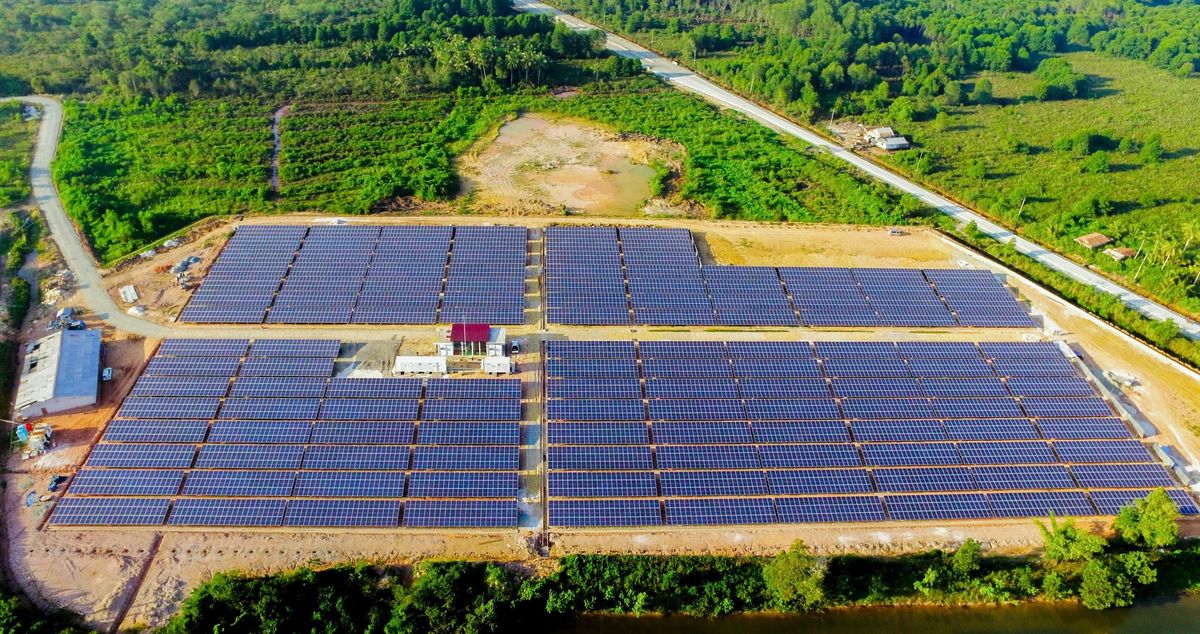In today’s rapidly evolving world of energy, the concept of microgrids is gaining increasing importance. But what exactly is a microgrid and how does it work?
This article aims to provide a comprehensive understanding of microgrids, shedding light on their functionality, benefits, and potential applications.
What is a microgrid?
Simply put, a microgrid is a localized energy system that operates independently or in conjunction with the main power grid. It consists of distributed energy resources (DERs) such as solar panels, wind turbines, battery storage systems, and backup generators.
These DERs are interconnected with various power solutions, forming a small-scale grid that can generate, store, and distribute electricity for different villages or small-scale cities.

How does a microgrid work?
A microgrid functions through a sophisticated control system that manages the flow of electricity between various energy sources, loads, and storage devices.
Let’s dive deeper into the working mechanism of a microgrid:
1. Energy generation.
Microgrids primarily rely on and use renewable energy sources, such as solar and wind, to generate electricity. Solar panels convert sunlight into electrical energy, while wind turbines harness the power of wind to produce electricity. These sources generate clean and sustainable energy, reducing dependence on fossil fuels and lowering carbon emissions.
2. Energy storage.
Microgrids utilize battery storage systems to store excess energy generated during periods of low demand or high production. These batteries can be charged when energy supply exceeds demand and discharged during peak demand. By effectively managing energy storage, microgrids ensure a constant and reliable power supply, even during fluctuations in energy generation.
3. Load management.
An integral part of microgrid operations is load management, which involves balancing the energy demand from various sources connected to the grid.
Smart meters and advanced control systems monitor the energy consumption patterns of individual consumers, allowing for optimized energy distribution. This intelligent load management helps minimize wastage and ensures efficient utilization of available resources.
4. Islanding capability.
One of the key features of microgrids is their ability to operate autonomously, disconnected from the main power grid if necessary. This capability, known as islanding, allows microgrids to continue supplying electricity to critical loads in case of a grid-wide outage. By isolating from the main power grid, microgrids enhance resiliency, reliability, and the ability to restore power more quickly.
5. Grid interaction.
Microgrids can also interact with the main power grid when required.
During periods of high energy demand or when renewable energy generation is insufficient, microgrids can draw power from the grid. Conversely, excess energy generated by microgrids can be exported back to the main grid, promoting a two-way flow of electricity.
This dynamic grid interaction ensures a stable and balanced energy supply system.
Benefits of microgrids.
Microgrids offer numerous benefits, making them an attractive solution for various applications.
Here are some key advantages associated with microgrid systems:
- Resilience: Microgrids enhance the resiliency of the power supply by operating independently during grid failures or natural disasters, ensuring uninterrupted electricity to critical loads.
- Reliability: By diversifying energy sources and incorporating advanced control systems, microgrids provide a reliable and stable power supply, reducing the risk of blackouts and outages.
- Sustainability: With a focus on renewable energy generation, microgrids promote sustainable practices, reducing reliance on fossil fuels and minimizing environmental impact.
- Cost savings: Microgrids enable optimized energy management, leading to reduced energy costs and potential savings for consumers. Unlike traditional power grids which are too expensive to build and rigid to maintain, microgrids are affordable to build and easy to maintain.
- Localized power: Microgrids empower local communities and improve energy access in remote areas by decentralizing power generation and enabling energy independence.
Applications of microgrids.
Microgrids have versatile applications across various sectors if we exclude just household use.
Some prominent examples of microgrid deployments include:
- Commercial buildings: Microgrids provide reliable and efficient power supply solutions for commercial buildings, optimizing energy utilization and reducing operating costs.
- Industrial facilities: Microgrids can enhance the energy resilience of industrial facilities, supporting critical operations and mitigating the risk of production disruptions.
- Remote communities: Microgrids offer a reliable and sustainable source of electricity to remote communities that are not connected to the main power grid, improving their quality of life.
- Military installations: Microgrids play a vital role in military operations, ensuring continuous power supply, enhancing energy security, and supporting mission-critical activities.
Conclusion.
Microgrids represent a paradigm shift in energy generation and distribution, enabling decentralized and sustainable power systems.
By harnessing renewable energy sources, incorporating advanced control systems, and promoting resilience, microgrids ensure a reliable and efficient electricity supply. With their numerous benefits and versatile applications, microgrids are revolutionizing the way we envision the future of energy.
Leave a Reply